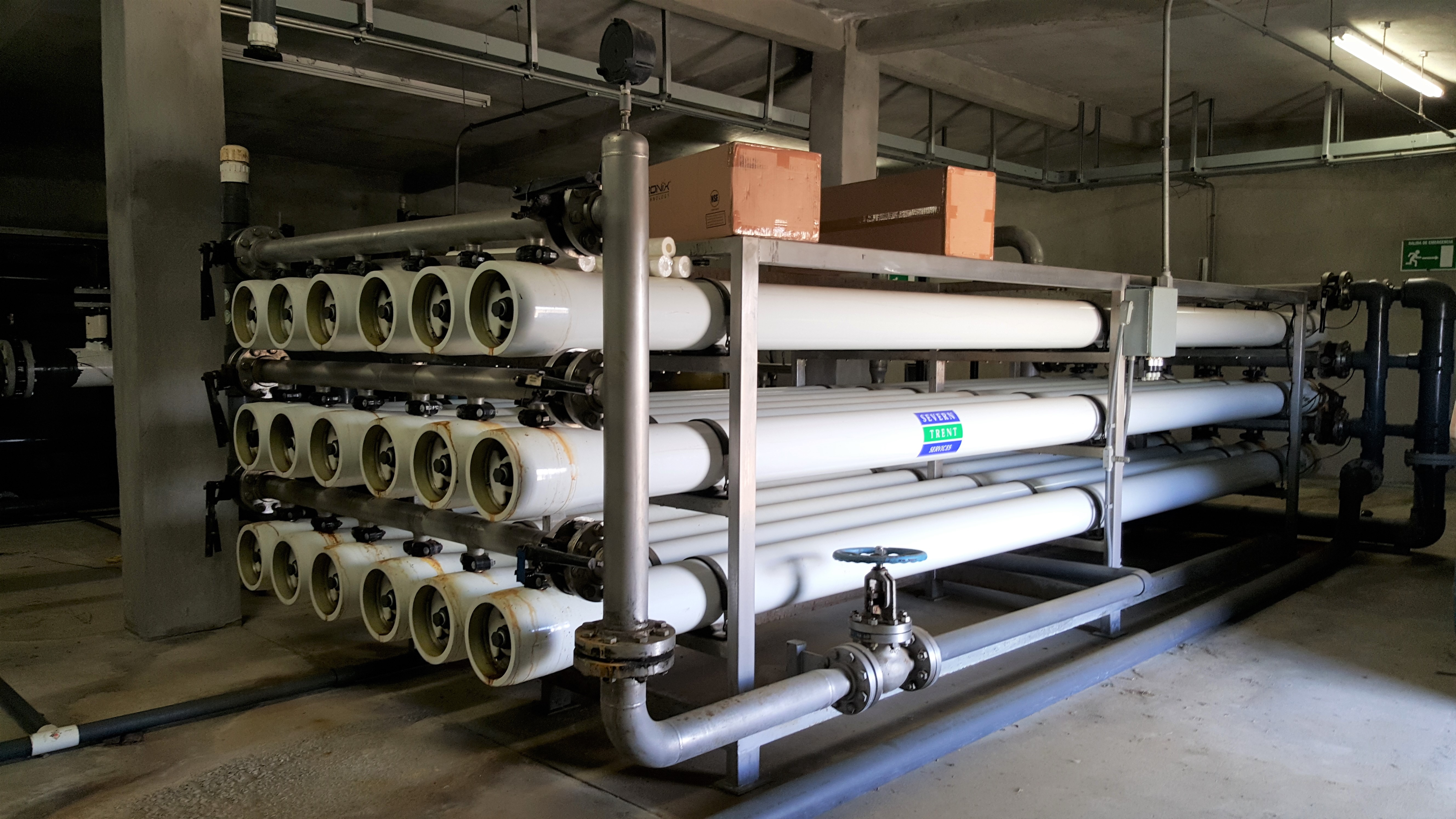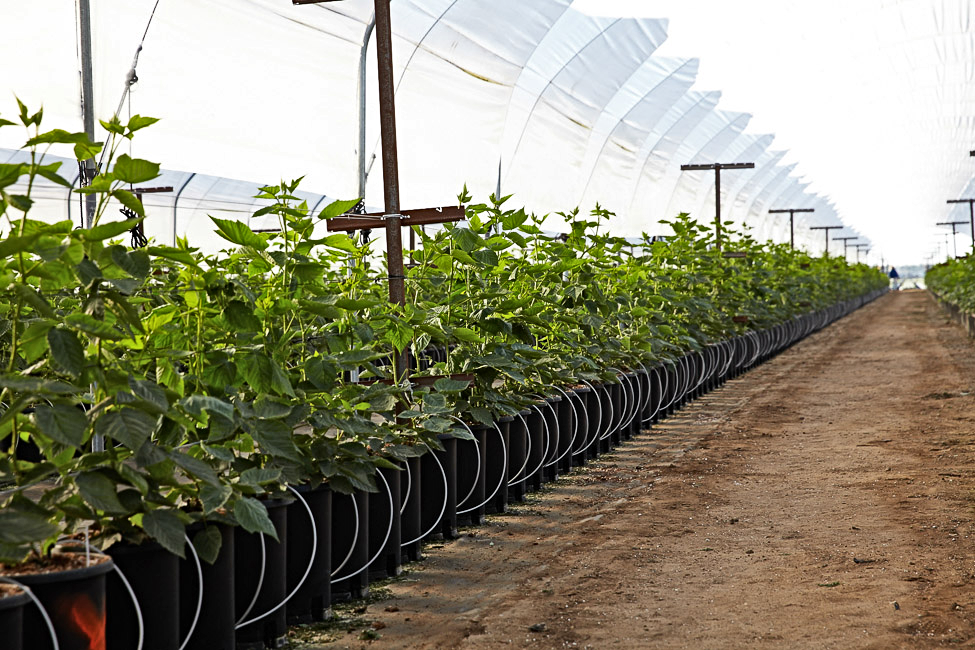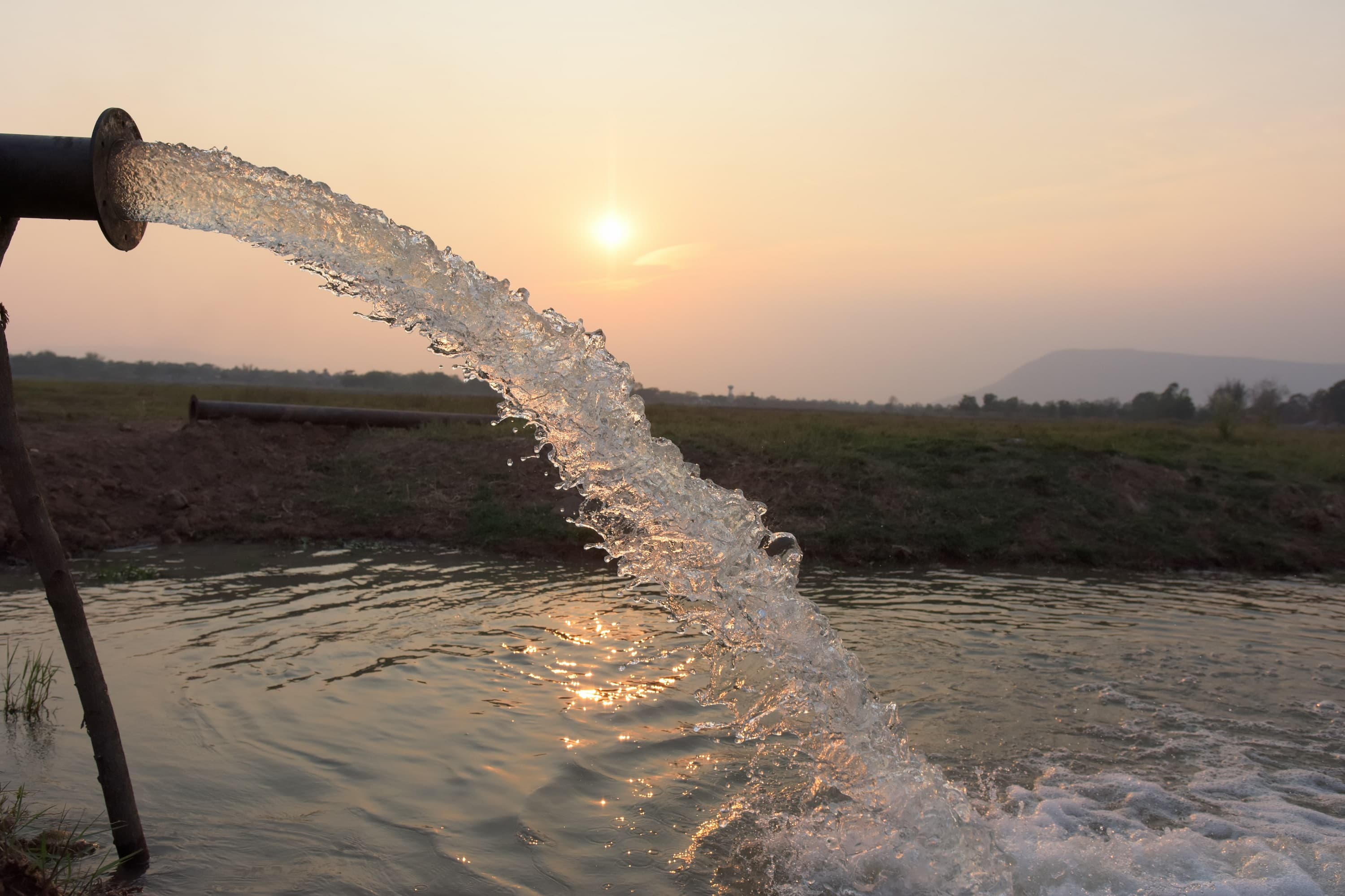While certain growing regions can provide the perfect climate and soil for crops, other natural resources, like water, can be limited in quality, availability or both. Good Farms™ makes use of technology that not only improves water quality but also makes the best possible use of the minimal water that is available.
Founded in 1986 in San Diego, California, Good Farms began primarily as a sales company for Northern Baja, Mexico farmers that needed access to the North American market. With the growing need for quality, year-round produce, the company adapted to become a fully integrated grower-shipper and leader in the production of conventional and organic fruits and vegetables, including strawberries, raspberries, blackberries, blueberries, and tomatoes with five operations throughout Mexico and three in California.
UN Goals:
3 - Good Health and Well-Being for All
6 - Clean Water and Sanitation
8 - Decent Work and Economic Growth
12 - Responsible Consumption and Production
17 - Partnerships for the Goals
Good Farms’ overall sales combine 50 percent independent grower’s product (most of whom have been with them 20 years or more) and 50 percent in-house production capacity. These long-term relationships facilitate aligned thinking with regard to how they serve their customers and what quality means in terms of food safety, social responsibility, and treatment of employees in the workforce. They are committed to addressing opportunities in the supply chain that improve the lives of all stakeholders.
To Good Farms, sustainability is at the core of their existence. They are a founding member of the Equitable Food Initiative (EFI), started several years ago by a group of retailers, growers and advocacy groups, set up to find collaborative ways to ensure an equitable and sustainable food system. They serve on the Board and were the first farm to be EFI certified. They are actively involved with CIERTO (an organization that recruits, trains, and places experienced agricultural workers from Mexico on farms in the United States) in the development of a safe and transparent system for pairing dedicated farm workers with responsible growers in addition to other green initiatives.
They are a principal-centered company and, according to Good Farms Partner, Dave Murray, “We strive for win-win solutions throughout the entire supply chain, from the person picking the fruit all the way to the consumer eating it at the end of the transaction. We try to leave our communities in a better place by us being there.”
In 2018, they were awarded the coveted Communitas Award, recognizing their focus on benefitting employees, communities, and the environment.
The problem: Suitable water quality and availability
The availability of high-quality water suitable for irrigating crops is a critical component to the produce industry. Conversations around water quality have become a focal point over the last several years—from the water used to irrigate the field to the water containing nitrates and fertilizers leaving the field—due not only to regulations around water use but also due to a decrease in availability, a decrease in quality or both—especially in Good Farms’ northern Baja California, Mexico, operation where the average rainfall is less than four inches per annum.
To its benefit, Baja California has significant arable land and provides an excellent climate to grow tomatoes and fresh berries; however, the minimal rainfall severely limits the availability of suitable water for irrigation. Exacerbating the problem is saltwater intrusion due to the bordering Pacific Ocean to the west and the Gulf of California to the east. Saltwater leaches from these bodies of water into the ground and, subsequently, the wells, resulting in brackish water—water that is more saline than freshwater but less saline than true marine environments.
The current system in their Baja operation exists mainly by extracting the brackish water from ground wells into a holding reservoir. The level of salt in the water can vary, depending on where the well is located, and can range anywhere from 1,000 parts per million total dissolved solids to 11,000 parts per million total dissolved solids.

The brackish water must undergo extensive remediation before it can be used for crops. “The range in terms of suitable irrigation water quality is pretty tight for producing high-yield, high-quality crops,” says Murray. While some crops like tomatoes are more salt tolerant, other crops like berries are more salt sensitive. The saltier the water and the poorer the quality, the more water it takes to irrigate. The concept is that when the water is clean, less is needed for irrigation. When there is a higher level of salt, it takes more water to get the job done.
Not only is the problem that the water Good Farms is able to extract from the ground is low quality as it relates to salt load but also the low productivity of some wells—the water is physically not there. Many wells in Baja California are not hugely productive when compared to those in the Central Valley of California or other parts of the U.S. As an example, in their Baja operation, they may have a well that produces 10 liters per second, which is about 159 gallons per minute, whereas a well in the Central Valley of California can easily produce 100 liters per second, which is 1,500 gallons per minute. While the productive wells in Baja provide enough water to sustain their current farming footprint, there is limited water to expand given the overall limited availability.
Also important is that, once the water has been remediated, the most efficient use of the water is paramount. “When you have both a very scarce resource such as the raw water that comes into the system and an even more costly resource once it has been treated, you want to make the best use you possibly can out of that water you've created for irrigation,” states Murray, adding, “We're really just trying to solve a growing need for the products that consumers demand…water is the foundation of it all.”
The solution: Transforming and optimizing limited resources
Low-productivity wells do not provide enough water for irrigation individually, but there is strength in numbers. To maximize the capture of available water produced from these wells, Good Farms connected them through a series of pipelines. The water from the wells is then pumped into a holding reservoir, which consolidates the raw water that is then drawn through a single line into their reverse osmosis (RO) plant.

Though reverse osmosis is not a new concept, it is one that makes Good Farms’ operations in Baja California possible. RO systems reduce water salinity and prevent soil sodium buildup, among other benefits that improve water composition. The system uses multiple filtration levels through which the water travels, segregating the water molecules from other dissolved solids in the water (e.g., salt, et al.). It is a fairly simple technology that uses energy applied to power pumps. Each RO system is designed to treat a certain amount of water, usually gallons or cubic meters per day, depending on the size of the plant and the number of membranes the system uses.
The source water enters the system and goes through a pre-filter and a sand filter, which separates out large solids so they do not block the finer filters. The water then goes through a subsequent filter and is then sent to the RO pump. The RO pump runs the water to the actual osmosis filters, where the water is pushed with high pressure through a semipermeable membrane. This process filters the water on a molecular level, producing what is essentially distilled water of 40 parts per million TDS or less. (A value of 40 ppm means that from one million particles there are 40 dissolved ions and the remaining are water molecules.)
The discharge—the remaining hyper-saline water—is drained into a separate reservoir where it can either be evaporated or re-treated. Because of the region’s limited water supply, Good Farms makes every effort to minimize the amount of discharge, which can range anywhere from 20 percent to 40 percent of the total water and re-treats the hyper-saline water with a second pass through the RO system to reduce the discharge amount even further.
Following the final filtration, the treated water is sent to holding reservoirs, where it is blended and available for use as needed. To work effectively, the RO system requires a constant feed and must run 24 hours a day. The treatment and blending process brings the water salinity down to a level of around 500 parts per million, making it suitable to irrigate the crops.
Equally important to water management is efficient use of the space and the water once it has been treated. For direct soil-grown crops, to prevent evaporation loss and deep percolation (where water drains below the root zone), Good Farms utilizes drip irrigation as well as micro sprinklers versus large aluminum pipes that cast larger streams of water. This is geared around giving the plant what it needs, where it needs it and not more than what is required to irrigate the crop.
Good Farms is also working on hydroponic cultivation techniques for use in concert with container- or trough-grown crops, where they can recover the portion of water that drains below the root zone. For example, raspberries are grown in a row of 32-liter buckets that are filled with perlite and cocoa fiber husk (substrate) and raised slightly over the ground surface. Set above the buckets is a drip hose, programmed to irrigate five minutes five times a day.

A certain percentage of that water will drain through the substrate and the leached water, rich with fertilizer, can be collected in a drain gutter set beneath the buckets on a pitch that directs the water through a system of drains to a cistern, tank, or other reservoir. The nutrient-rich water can then be re-treated using UV light or other water treatment methods and returned to the same hydroponic system or used to irrigate soil crops. The concept is the same for any crop (i.e., those grown in greenhouses, tunnels, shade houses, etc.) and maximizes recovery of a valuable resource that would otherwise be lost.
The takeaway: Visions for the future
Balance is always needed between sustainability and cost. Desalination is not an inexpensive endeavor—the low and high cost of desalinated irrigation water in Mexico ranges from $800USD/acre foot to $2,000USD/acre foot, depending on the level of desalination required (1 acre foot = 43,560 cubic feet = 325,851 U.S. gallons = 1,233,480 liters). Most of Good Farms’ crops require approximately 3 acre feet of water per acre or 9,000 cubic meters of water per hectare. But, when there is no other option, the cost becomes a nonissue as long as the end product that is grown and sold is enough to recover that cost.
“It’s a challenge, but it’s doable,” says Murray. “It is the most sustainable in terms of water availability and can be done in a sustainable and environmentally sensitive way.”
For Good Farms, it is about trying to see the future, having a vision and understanding that, as business leaders, they need to anticipate problems and respond to those problems proactively to minimize the effect. They continue to look for new and innovative ways to measure and provide data as a backdrop to water savings and water utilization.
“Any type of new technology that allows us to do more with less is going to be the most important investment we can make as agriculturalists to ensure that we're supplying the world with the fresh fruits and vegetables that are going to keep everyone healthy,” states Murray.
Their overall vision is to uncover the barriers to water management at a high level to make sure they hit all the right components of productivity, sustainability and environmental sensitivity.
To that end, Good Farms is exploring processes to draw water from the Pacific Ocean, a vast resource that would exponentially increase their water availability in the Baja region. However, harnessing water from the ocean is challenging. With 30,000 parts per million in total dissolved solids, a more complex technology is needed. The process is similar to that used to extract water from wells however, due to the higher salt content, more energy, larger pumps and more efficient membranes are required. But the technology is continually improving.
They are also exploring other sustainable, cost-effective processes, including variable RO systems that continually adapt to lower and higher salt levels in the water, enabling an optimum flow rate without unnecessary energy waste.
With their overarching sustainability initiatives and their vision for the future, Good Farms is exemplifying their mission to Improve Lives from Farm to Table.
Asserts Murray, “It's important because, if done well, you can significantly improve the lives of the people that make their living in the communities where we're engaging—the people that work in our fields, the people that have good jobs because we are in a certain community that is growing economically because of the work we do—all the way through to our retail partners, our customers, and certainly the consumers, who enjoy an abundant supply of high-quality, indulgent, fresh fruit and vegetables.
To Good Farms, these types of initiatives are imperative to sustain growth and consumption as the population and, in turn, the demand increases for these products globally. The issues will not go away without an active, multi-stakeholder approach to solving them. It is about improving lives and expanding production capacity for their customers and their consumers but, says Murray, “it has to be done in the right way, where everyone involved in the process wins.”
